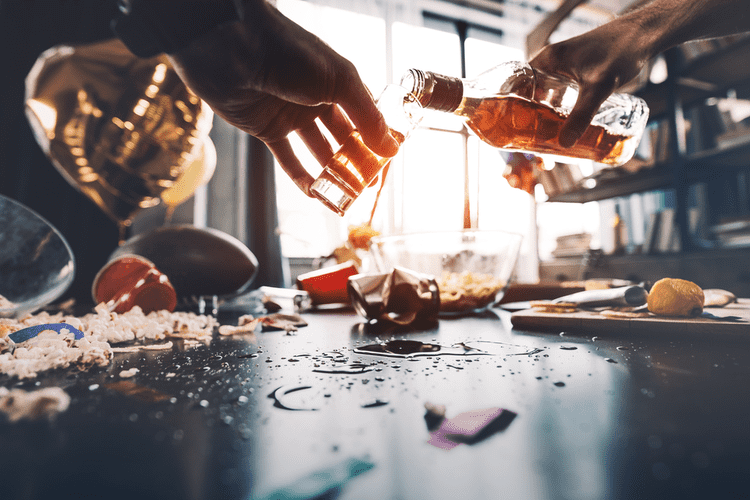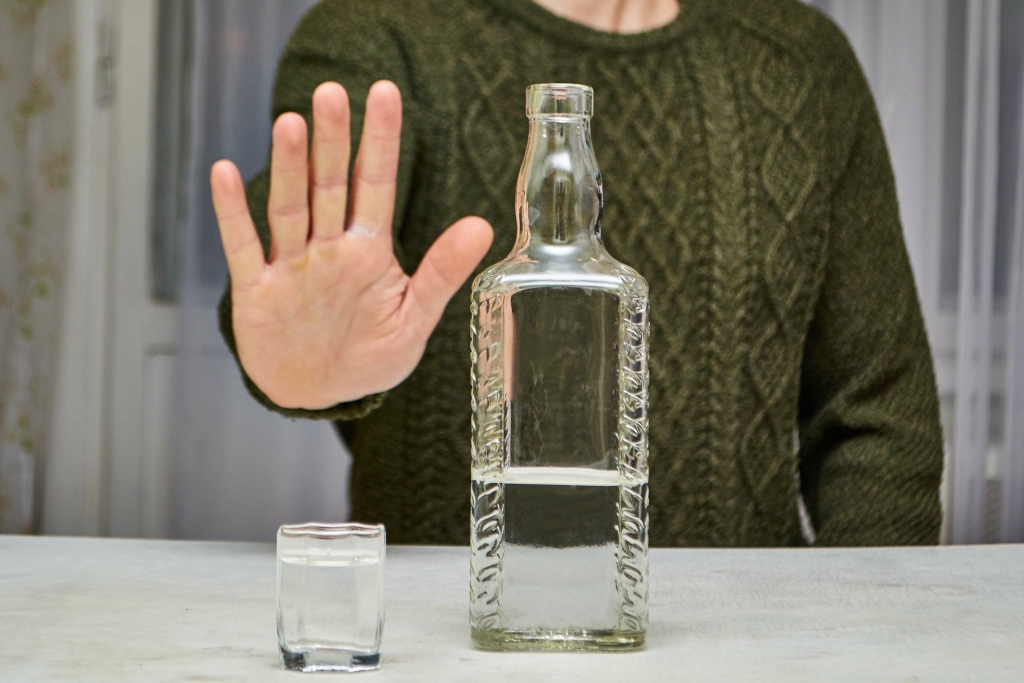Sober living
Pros and Cons of Sober Living Homes: An In-Depth Analysis
Sober living in California has become an increasingly popular option for individuals in recovery from addiction. While this may feel similar to an inpatient treatment program, the environment remains residential and community-oriented rather than institutional. Level two residences introduce a bit more structure while still emphasizing peer support. In these homes, there may be a house manager or supervisor who enforces house rules and coordinates group activities or house meetings.
- They are ideal for those who have completed inpatient treatment and seek a drug-free environment to foster independence.
- However, maintaining long-term sobriety requires structure, accountability, and a supportive environment.
- One way they do this is by structuring their rooms for a semi-private living situation (meaning two people will often share a room).
- By fostering a sense of community, sober living homes empower individuals to support one another, building valuable relationships that can facilitate long-term recovery.
- Many halfway homes are still used to shelter newly released offenders or as a solution for homelessness, while others are dedicated to housing persons who have recently completed addiction treatment.
Understanding the Samba Recovery Approach to Addiction Treatment
Whether you are https://ecosober.com/ struggling with addiction, mental health or both, our expert team is here to guide you every step of the way. Don’t wait— reach out today to take the first step toward taking control of your life. Explore the steps of recovery from addiction, from therapy approaches to support resources for lasting healing. Contact us today to find out how Transitions Sober Living can support you or your loved one on the path to recovery. We are here to answer your questions, discuss our program offerings, and help you take the next step towards long-term recovery.
Common Challenges for New Sober Living Homes
Costs for staying in a sober living home can vary widely, typically ranging from $500 to $5,000 per month, with residents generally covering their expenses through personal funds or employment income. Red flags to watch out for include a lack of house rules, untrained staff, and inadequate safety measures. Additionally, choosing a location outside one’s hometown may help individuals avoid relapse triggers and build new, healthy habits. Given these struggles, men-only homes usually focus on early treatment, mental health support, relapse prevention, and aftercare programs. Consider asking folks at a recovery meeting or touching base with any sober friends you may have. If you recently completed a treatment program, contact the staff there for referrals to local sober living homes.
There is no required length of stay, but they are recommended to stay for at least 30 days to reduce the likeliness of relapse. Here at SAL, our initial lease term is 30 days, and can be renewed on a month-to-month basis from there. Rent prices for a sober living home generally correlate with rent prices for a decent apartment or home. Monthly rent payments vary based on the area’s average mortgage or rent costs. While there are many advantages to living in a sober living home, there are also some potential disadvantages to consider. Reframe supports you in reducing alcohol consumption and enhancing your well-being.
Residents in sober living homes are expected to maintain their sobriety, participate in group meetings, and contribute to household responsibilities while meeting all expenses. Unlike halfway houses, sober living homes typically provide voluntary residency following intensive treatment programs. Residents often enjoy greater independence while adhering to house rules designed to maintain sobriety. A sober living home is a structured, substance-free residence that supports individuals recovering from addiction, typically after completing a rehabilitation program.
Living in a sober living home comes with a range of costs that can vary significantly based on several factors, Drug rehabilitation including location and amenities. Monthly rent for these homes can range from as low as $450 to over $10,000, influenced by the region and the type of accommodation offered. For instance, in cities like Los Angeles, the average cost tends to settle around $900, with options for basic dorm-style living being more affordable.
Inpatient Alcohol Rehab
By fostering a sense of community, sober living homes allow individuals to connect with others who share similar recovery goals, enhancing their chances of sustained sobriety. It’s essential to ensure that the sober living home aligns with your personal recovery goals. Assess how the home’s structure, rules, and community can help support your journey towards sobriety.
Entry Requirements and House Rules
Most people stay in sober living for an average of 166 to 254 days, but it’s a matter of personal preference. Like any treatment option, sober living houses have plenty of benefits and drawbacks. To sum things up, sober living houses help you learn how to integrate yourself back into society with recovery at the forefront of your mind. During a day in sober living, you will complete chores, attend house meetings, go to therapy, attend support groups like 12-step meetings, and search for employment. The exact activities you partake in will depend on the specific sober living you attend and your goals or priorities.
Our knowledgeable and helpful team takes a client-focused approach to help you track and achieve your business goals, one step at a time. As mentioned before, sober living homes are often created in residential dwellings. With this in mind, you’ll want to research the zoning laws of prospective properties. The regulations and zoning laws may differ depending on the city and state of your desired location. The residential property will need to be large enough to accommodate the number of residents you wish to serve. Furthermore, be prepared to face some backlash from nearby neighbors when starting a sober living home in a residential community.
What are Halfway Homes?
Halfway houses are often reserved for those who have completed a residential treatment program and require additional support and supervision as they transition back into the community. Residents in halfway houses may be subject to more stringent rules, including mandatory curfews and drug testing. Sober living is an option after the intensive treatment provided in inpatient care.
They called their experiment in group living and joint sobriety Oxford House. It was the first step in a nationwide movement, now almost 50 years old, that has been credited with helping thousands of people overcome addiction and lead productive lives. Paul Molloy was a young lawyer on Capitol Hill who had a key role in drafting legislation that created Amtrak and other federal programs.
Julia Childs Heyl is a clinical social worker who focuses on mental health disparities, the healing of generational trauma, and depth psychotherapy. Contact us today for more information on our highly-rated sober living program. These software solutions make the whole process of case management, right from induction to exit a breeze for both the client and the case managers.
- We do not receive any fee or commission dependent upon which treatment or provider a caller chooses.
- Sober living programs offer extended support to people recovering from drug or alcohol addiction.
- Many individuals and families in the USA turn to sober living homes for structure, accountability, and support during this critical stage.
- When considering sober living options, it’s common to hear about halfway houses.
- There is a continuum of care in substance abuse treatment that includes sober living.
- These services address not just addiction, but the underlying issues that contribute to substance abuse, helping you to understand and manage your triggers more effectively.
As long as you are actively pursuing your recovery in some way, abiding by community rules, and paying all dues, you should be free to remain in a sober living community for as long as necessary. Everyone has a unique experience of recovery from drug addiction or alcoholism, and the best sober living communities account for this with a flexible approach. In its simplest form, an Oxford House is a shared residence where people in recovery from drug and alcohol addiction can live together and support each other in a drug and alcohol-free environment. Sober living homes vary depending on how they’re run and the services they provide. Some sober living homes may also cater to specific groups, such as women, men, young people, older adults or LGBTQIA individuals.
Why Changing Your Environment Can Help with Sobriety
While different from rehab, sober living homes can have an integral part in the recovery process and have been shown to support the recovery process according to researchers. They provide a safe and structured environment for people in early recovery as they are getting used to living a life of sobriety. This blog provides an overview of what to expect in sober living, who it is suited to, and how it can support people in recovery from substance use disorder. Recovery housing is specifically designed to support individuals with substance use issues to initiate and sustain long-term recovery. These houses or housing programs may go by many names such as Oxford Houses, sober living, recovery homes recovery residences, and therapeutic communities.
Meetings were held both in the home and in neighboring organizations in the community. Read on to learn about what a sober living house is, the history of sober living homes, types, who should go to one, and how you can find a sober living house. “I am so grateful to be a part of this Los Angeles sober living community! While this is a step in the right direction, again, for New Life House residents, this model is generally not sufficient.
All About Drug And Alcohol Addiction And Treatment
Medical detox helps manage these symptoms safely, using medications and professional monitoring to reduce discomfort and prevent serious health risks. Gradually reducing the drug dose assists in managing withdrawal symptoms while also protecting the patient’s mental and physical health. At this point, the patient progressively decreases the drug dose and experiences withdrawal symptoms as the body tries to reach a state of stability in the absence of the chemical. This step is unique to each patient and changes according to the intensity of their substance use.
You deserve excellent care and a rewarding life in recovery.
Thomas has been in the Santa Cruz area his whole life and is proud to serve his community in fighting addiction one client at https://remotetalents.nl/why-do-heavy-drinkers-outlive-nondrinkers/ a time. If you notice any of these signs, it’s essential to talk with your doctor about what they mean so you can receive the appropriate treatment. Drug addiction significantly impacts family dynamics, often creating a stressful and sometimes volatile environment. ‘s 2017 study, ‘Understanding adolescent inhalant use’, approximately 684,000 adolescents aged 12 to 17 used inhalants in 2015. The study found that adolescents were more likely than adults to use inhalants (2.7% vs 0.4%), with female adolescents showing higher rates than males (3.2% vs 2.3%). Most users (59%) reported using inhalants 1-11 days in the past year, with felt-tip pens/markers being the most commonly used substance.
How to Recognize and Manage Emotional Triggers in Recovery
Developing coping mechanisms to manage stress, cravings, and triggers is important for handling the challenges that may arise during the lifelong journey of recovery. Tapering often involves either slowly lowering the dose of a drug or the use of medications to alleviate drug withdrawal. For example, many outpatient opioid detoxification and inpatient opioid detoxification programs will use a combination of medications to help someone taper off of opioids. These medications may include anti-anxiety medications like benzodiazepines, anti-nausea medication, and/or medication-assisted treatments (MAT) like suboxone to minimize withdrawal symptoms. Starting the journey to recovery from drug or alcohol addiction is a courageous step, and detoxification (detox) is often the first phase.
Short-Term Effects of Drug Addiction
These drugs have Sober living home more of an impact on your body, which means it’s essential always to be aware of what you’re taking so you do not overdose or go through any severe side effects. Understanding the different types of addiction is crucial for effective treatment and support. Physical addictions involve substance dependence, leading to tolerance and withdrawal symptoms.

DBT’s role in improving emotional resilience

Identifying mental health concerns that can contribute to substance abuse leads to more effective treatment. An individualized treatment plan takes unique needs into account, putting people in a better position to continue their journey toward sobriety. The duration of the detox process varies depending on several factors, including the drug in question, the individual’s level of dependence, and their overall health. Generally, the acute phase of detox lasts anywhere from a few days to a couple of weeks. For some drugs, like alcohol or opioids, detox may take several weeks or even months. The side effects of drug detox are nausea, anxiety, sweating, and seizures, among others.
- If you believe it’s your best option, get a doctor to review your situation and approve the plan before you start.
- However, trying to quit cold turkey without any medical support has a lower chance of success than seeking medical support and supervision to stop substance use.
- Additionally, they can also help you ease your withdrawal symptoms; even if they aren’t deadly, many are uncomfortable, and seeking professional help can make your detox process much less challenging.
- Different drugs have different effects on your body, both during use and as your system begins to heal.
Urban Recovery is a top addiction treatment center in 2025, offering personalized care, family support, and dual diagnosis treatment for lasting recovery. He utilizes positive psychology as much as possible during his counseling sessions. Positive psychology is a treatment approach that believes all people want to lead fulfilling and meaningful personal and professional lives.
What Are the Most Common Medications Used for Cannabis Detox?
Whether you’re struggling with alcohol, opioids, or other substances, our holistic detox process is designed to help you start strong. There is only one class of these medications known as benzos, so it doesn’t matter drug detox if you’re prescribed Xanax or Ativan. The most common treatment for withdrawal symptoms is to use drugs like Buspirone and Flumazenil to help lessen the effects of withdrawal symptoms, which can include insomnia, irritability, and panic attacks. These stages represent critical transitions from casual exposure to compulsive drug use, marked by increasing tolerance, loss of control, and significant life impacts. Treatment for alcohol use disorder typically involves a combination of detoxification under medical supervision, behavioral counseling, and therapy.
- Stimulants are substances that increase activity in the body and brain, raising levels of physiological or nervous activity in the CNS.
- Similarly, it decreased serious opioid-related acute care use by 42% at 3 months and by 26% at 12 months.
- The duration of the detox process varies depending on several factors, including the drug in question, the individual’s level of dependence, and their overall health.

Additionally, screenings such as the DSM-5 criteria or the Substance Abuse Subtle Screening Inventory (SASSI) help to quantify the severity of the addiction and guide treatment plans. Together, these methods provide a holistic view of the individual’s condition, enabling healthcare professionals to make accurate diagnoses and recommend appropriate interventions. Level 4-WM is the most intensive type of inpatient treatment for severe withdrawal and is known as medically managed withdrawal. You receive 24-hour nursing care plus daily physician visits to treat medically unstable symptoms in a hospital or a similar setting. Alcohol and benzodiazepine withdrawal can lead to seizures, unstable vital signs, confusion, and even death.
These symptoms interfere with daily life and lead to significant health and social issues. Hallucinogen addiction includes the use of substances that alter perception, such as LSD and psilocybin mushrooms. While not as physically addictive as other drugs, hallucinogen addiction leads to psychological dependence and persistent changes in mood and perception. The 2021 National Survey on Drug Use and Health (NSDUH) found that 3.6% of people aged 12 and older, roughly 10.6 million individuals, reported using hallucinogens in the previous year. This figure includes 8.1% (approximately 2.7 million) of young adults aged 18 to 25, 3.0% (around 6.6 million) of adults aged 26 and older, and 2.0% (about 521,000) of adolescents aged 12 to 17 (SAMHSA, 2021).
How Long Can Ecstasy Molly MDMA Be Detected In Your System?
We work with most major insurance providers and are proudly in-network with United Healthcare. There are no proven methods to accelerate how quickly MDMA leaves the body. According to scientific evidence, drinking water and exercising do not speed up metabolism. Excessive consumption of water can lead to hyponatremia, a dangerous condition that can cause seizures, coma, and death in serious cases. One defining feature of MDMA is the 3,4-methylenedioxy ring, a chemical structure also found in natural compounds like safrole (from sassafras) and myristicin (from nutmeg).

Saliva and Hair Tests: What to Expect
These methods take advantage of the https://www.agricanopy.com/how-to-stop-using-alcohol-to-cope/ unique chemical signature of each compound, providing more precise results. At-home attempts at detoxing rapidly may cause a number of uncomfortable side effects, including sweating, agitation, anxiety, nausea, and muscle pain. However, there is no safe way to speed up the detoxification process in an attempt to clear a drug test. The amount of a drug that is consumed, and the frequency at which it is consumed, will ultimately determine how long it will remain in your system. There are many publications out there that might suggest a detox drink or workout routine that will enable your body to rid itself of ecstasy faster. Though often used interchangeably, Molly refers to pure MDMA, whereas ecstasy might mix with other agents in its pill form.
- The typical amount of hair tested is about 1.5 inches, measured from the root end, which can reveal up to three months of previous drug use.
- The effects of Molly usually begin within 30 minutes to 1 hour after ingestion.
- Jim’s career in business development and marketing spans over a 30 year period of time.
- Jackie O graduated from C.A.T.dogsinc a premier pet therapy organization in Ft Lauderdale dedicated to improving the lives of those in need.
Scottsdale Detox
MDMA, known by names like ecstasy and molly, is a stimulant in the empathogenic psychoactive class. Whether you are fearing its effects on the body or just curious about its duration, knowing Twelve-step program how long MDMA stays in your system is essential. Although it’s not believed to be as addictive as some illicit drugs, such as cocaine, there is evidence to suggest it can be abused and become addictive.

Contact Knoxville Recovery Center
- MDMA can be detected in urine for 3-4 days, in blood for 1-2 days, and in saliva for 1-3 days.
- Drinking excessive water or exercising after taking MDMA will not lead to faster elimination and can even be harmful.
- However, in some cases, it can be detected in your blood for a longer period of time.
- Urine tests can detect MDMA for up to 3 days, depending on factors like dosage and metabolism.
- Here, it will be metabolised into chemical compounds called metabolites.
- The answer to the question, “how long does ambien stay in your system” is that Ambien (zolpidem) typically stays in your system for about 8 hours, with its effects diminishing after that time.
Drug tests detect both parent drug and metabolites, extending detection windows. Since the liver and kidneys play key roles in breaking down and excreting MDMA, impaired liver or kidney function can slow down the process, causing the drug to remain in the system longer. Individuals with healthy liver and kidney function typically metabolize MDMA at a standard rate. Metabolism naturally slows with age; older individuals tend to process and eliminate MDMA more slowly than younger people. These differences are partly due to age-related changes in liver and kidney function, which are responsible for breaking down and excreting the drug. Urine pH levels may affect how quickly MDMA is eliminated, with alkaline urine (higher pH) leading to slower excretion.
- There are no proven methods to accelerate how quickly MDMA leaves the body.
- Other factors that can influence the detection time include the purity of the substance, whether it was combined with other substances, and the individual’s diet and water intake.
- Our dual diagnosis treatment program addresses both addiction and mental health issues.
Trauma Therapy
You’ll begin to build a balanced life in recovery, and you’ll emerge a happier, healthier person. A urine sample can have MDMA in it for up 2 to 4 days after the last dose. Urine tests are sensitive and may return false positives even when you have not taken molly recently. Taking certain medications may increase your chances of a false positive. It is important to note that MDMA use can have negative side effects, including dehydration, overheating, and anxiety. If you or someone you know is struggling with MDMA or ecstasy addiction, it is crucial to seek help from a healthcare professional or a specialized rehabilitation facility.

Specialized Treatments & Detox
MDMA, also known as molly or ecstasy, can be detected through various drug tests, including urine screenings. MDMA, also how long does molly stay in your urine known as “molly” or “ecstasy”, is an illegal, synthetic drug with stimulant and psychedelic properties. Hair tests offer the longest detection window for MDMA, as traces of the drug can be found in hair samples for 90 days.
What are the risks of using high doses of MDMA?
Hillary thanks the program of recovery every day for the life she has and strives to be an example for women everywhere. Stephanie Behrens is a Licensed Marriage and Family Therapist and Licensed Professional Clinical Counselor, who earned her Masters in Clinical Psychology at Pepperdine University. She received her Bachelor’s degree in Psychology from the University of California, Santa Barbara.
Angela works in conjunction with the clinical team, specializing in aftercare with a strong commitment to promoting well-being and fostering positive change. Committed to recovery and wellness, she brings a personal understanding to her work in the addiction field. Outside of work, you can find Angela balancing the warmth of a fulfilling home life and finding joy in the companionship of her beloved puppies.
Narcissism and Addiction: Understanding the Link
As such, treatment typically focuses on reshaping rigid patterns of thought and behavior while addressing emotional regulation, interpersonal covert narcissist alcoholic functioning, and underlying insecurity 4. These patterns were linked to behaviors such as emotional manipulation, idealizing then devaluing a partner, and reacting defensively to feedback or conflict 5. These diagnostic criteria help clinicians differentiate between NPD and other personality disorders or conditions. Plus, they illustrate that someone can have narcissistic traits but not meet the full criteria for NPD.
- Millions of people in the United States live with alcohol use disorder (AUD).
- People who are genetically predisposed to experience unpleasant side effects of drinking are less likely to drink often, making AUD unlikely.
- Narcissistic individuals may use manipulation to maintain their self-image, while those with AUD may manipulate to hide or justify their drinking.
- Similarly, alcoholics avoid reflecting on their insecurities and lack of self-esteem by drinking.
Staying Strong: Strategies for Navigating Relationships with a Narcissist
You might also engage in lifestyle changes and self-care strategies in order to make progress. One such change might be to avoid substances like alcohol if they tend to trigger harmful behavior. If you answered “yes” to most of the questions above, speaking with a therapist might be a good idea.
Is Your Husband a Narcissist? Signs and Solutions for Dealing with a Narcissistic Spouse
Personality disorders like NPD are lifelong, but you can learn ways to cope with them, build self-awareness, manage symptoms, and have healthier relationships. Lyter says alcohol use disorder is severe, progressive, and can eventually lead to death if not treated. Both narcissists and people with AUD may have trouble recognizing and admitting that they have a problem –– but once they acknowledge it and actively put in the work in therapy, they can improve. A person’s personality is the thoughts, feelings, beliefs, and behaviors that make them unique. A personality disorder is a mental health condition that can impact these aspects of a person’s life. The symptoms of a personality disorder can make it challenging for a person to have healthy relationships.
Alcoholism Treatment – Pathways Recovery Center in Azusa, CA

Support groups like Al-Anon provide a safe space to share experiences and learn from others in similar situations. These groups offer coping strategies specific to living with alcoholism and narcissism. Exercise, meditation, and https://arvtrainer.com/alcohol-s-effects-on-health-national-institute-on-2/ journaling can help manage stress when dealing with a narcissistic alcoholic.
Treatment For Narcissism And Alcohol Addiction – Joining A Rehab Center
- Treatment approaches that address both narcissism and alcoholism can provide comprehensive support and guidance.
- The narcissistic alcoholic might blame others for their drinking or use their addiction as an excuse for poor behavior.
- Another study from 2019 linked drinking and the narcissistic traits of devaluing and entitlement-rage.
These traits exist on a spectrum and can vary greatly between individuals. Genetics can play a part, as can trauma, stress, and co-occurring mental health disorders. Social pressures and early exposure to drinking might contribute as well. For many, alcohol becomes a coping mechanism or a way to escape emotional pain and numb difficult experiences. Over time, however, excessive alcohol consumption often worsens these difficulties. Alcohol Use Disorder Treating people with narcissistic personality disorder and alcoholism can be very challenging.

For females, it is not advisable to consume more than one unit of alcohol per day. People may be unable to prevent certain factors, such as genetic reasons, that increase the risk of AUD and NPD. However, there are steps they can take to reduce risks within their control. Healthcare professionals and psychologists may use a set of criteria from the Diagnostic and Statistical Manual of Mental Disorders, Fifth Edition (DSM-5) to diagnose narcissism or AUD. Although NPD can’t be cured, someone with NPD can change their behavior if they’re willing to put in the time and effort, according to research from 2018.
- Active Recovery Companions specializes in providing support for individuals facing the difficulties of addiction recovery, including those with co-occurring disorders like AUD and NPD.
- Narcissistic individuals typically struggle with empathy, making it difficult for them to understand or relate to others’ feelings.
- People with narcissistic personality disorders may wish to control their sexual partner’s behavior for their own satisfaction, and they may have an inflated sense of sexual entitlement.
- If you know someone who regularly uses alcohol, it’s possible that narcissism might be one of the influencing factors.
Beyond that, a grandiose form, a socially dominant, agentic–antagonistic interpersonal style, and a vulnerable form, a neurotic–antagonistic style, can be distinguished (16). Our recent studies suggest that both aspects might be intertwined at high grandiosity (18, 19). Concurrent grandiosity and vulnerability are referred to as pathological narcissism (20). For example, both narcissists and alcoholics may exhibit manipulative, exploitative, and controlling behaviors. They may also struggle with feelings of entitlement and have difficulty taking responsibility for their actions. Engaging in risky behaviors is another symptom that overlaps with both alcoholism and narcissism 1.




